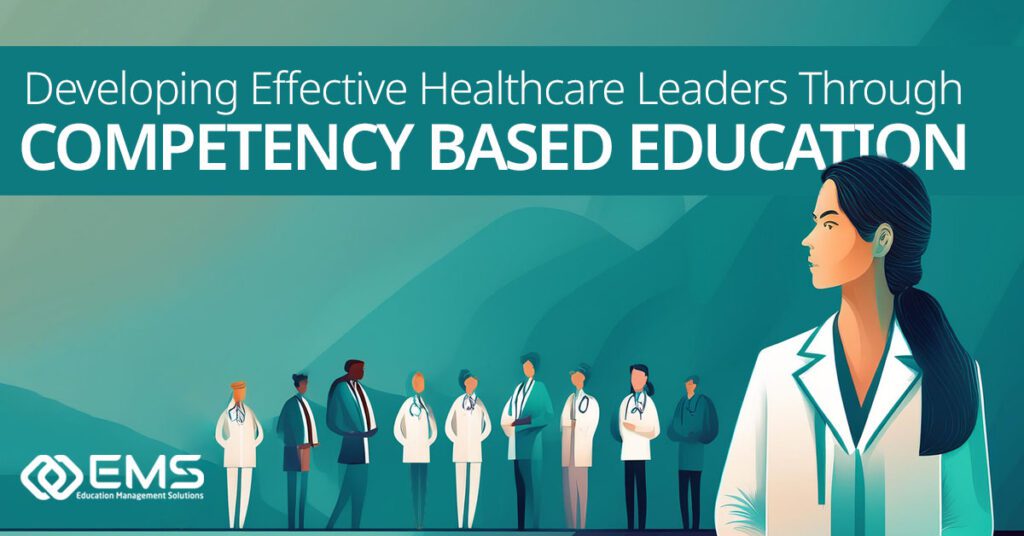Every day, healthcare professionals must make split-second decisions in which every choice and every second can mean the difference between life and death.
Effective leadership in these moments is essential. And yet traditional training often falls short of preparing leaders for this high-stakes reality.
Competency-based education (CBE) stands out as a way to develop strong healthcare leaders by better equipping them to manage the field’s unique pressures. In this post, we’re taking a closer look at what CBE is and how it can help bridge the leadership gap in healthcare.
Healthcare Has a Leadership Problem On Its Hands
In healthcare, leaders must balance clinical demands with strategic decision-making and team management. Yet, organizations often promote top-performing clinicians into leadership roles without providing the training they need to succeed, leaving them unprepared for their new roles.
Predictably, this often means more stress (for themselves and those around them), lower morale, and reduced team cohesion. Even worse is the effect it can have on patient care, potentially putting lives at risk.
Several factors contribute to the healthcare leadership gap:
- Tech Aversion: Ever-evolving medical technology requires leaders who can adapt quickly and help their teams navigate training and implementation.
- An Aging Workforce: The aging healthcare workforce has troubled hospital administrators and providers for years. As experienced leaders retire, organizations must develop new talent to fill these roles quickly.
- Complex Patient Needs: Increasingly intricate patient cases demand leaders skilled in critical thinking, ethical decision-making, and interprofessional collaboration.
Traditional training is not enough. Meeting today’s complex healthcare demands calls for a competency-driven approach.
Competency-based education focuses on the specific skills and competencies healthcare leaders need to succeed, offering a targeted, practical pathway to leadership development. Not only that, but this approach makes it easier for organizations to spot promising talent early, enabling them to build and nurture a pipeline of future leaders.
Essential Competencies for Healthcare Leaders
To lead successfully in healthcare, practitioners must be able to demonstrate the following competencies:
- Communication: Clear, direct communication is essential for fostering trust, building relationships, and coordinating with patients and team members.
- Collaboration: Leaders must navigate interprofessional environments to ensure smooth and efficient patient care, especially when stakes are high.
- Critical Thinking: The ability to assess complex scenarios, foresee potential challenges, and make informed decisions is vital to managing healthcare’s rapid pace.
- Ethical Decision-Making: Leaders occasionally encounter ethical dilemmas, and a strong ethical foundation empowers them to approach these with integrity, building trust among team members and patients.
The Role of Competency-Based Education (CBE) in Leadership Development
CBE supports healthcare leaders by providing structured, role-specific training tailored to real-world challenges. Through competency frameworks, leaders gain:
- Measurable Outcomes: Institutions targeting future leaders can track candidate’s progress against specific identified benchmarks.
- Hands-On Experience: CBE frameworks are designed to simulate complex healthcare environments, giving leaders practical experience in both clinical and soft skills.
To further support CBE’s effectiveness, competency mapping helps organizations pinpoint the precise skills required for each leadership role, making training highly relevant and targeted.
What Is Competency Mapping?
Competency mapping is a strategic process that identifies and defines the skills, knowledge, and behaviors essential for success in specific roles. In healthcare, competency mapping allows organizations to establish clear expectations for leadership positions, ensuring that CBE programs are tailored to build around those precise competencies.
By mapping competencies, healthcare organizations can create targeted training paths, helping future leaders meet the unique demands of their roles and fostering continuous growth.
Challenges and Considerations in CBE Leadership Training
While CBE is transformative for developing effective healthcare leaders, implementing it can be challenging:
- Resource Allocation: Building a winning CBE program can be resource-intensive at first, requiring sizeable investments in curriculum design, assessment tools, and tracking technology.
- Resistance to Change: Staff accustomed to conventional methods may resist transitioning from traditional training to a competency-based model. To encourage buy-in, it’s essential to communicate the value of CBE and provide ongoing support.
Despite these challenges, the benefits of a competency-based education make it well worth the investment for healthcare organizations committed to developing resilient leaders.
Competency-Based Educations Means Better Healthcare Leaders
CBE offers a practical solution for preparing leaders to navigate the complex world of healthcare by focusing on skill mastery, flexible learning, and practical preparation.
Curious how CBE can enhance your organization’s leadership program? Schedule a discussion to learn how EMS’s tailored competency solutions can reduce turnover, build effective teams, and ensure leaders are equipped to meet healthcare’s unique challenges with confidence.

